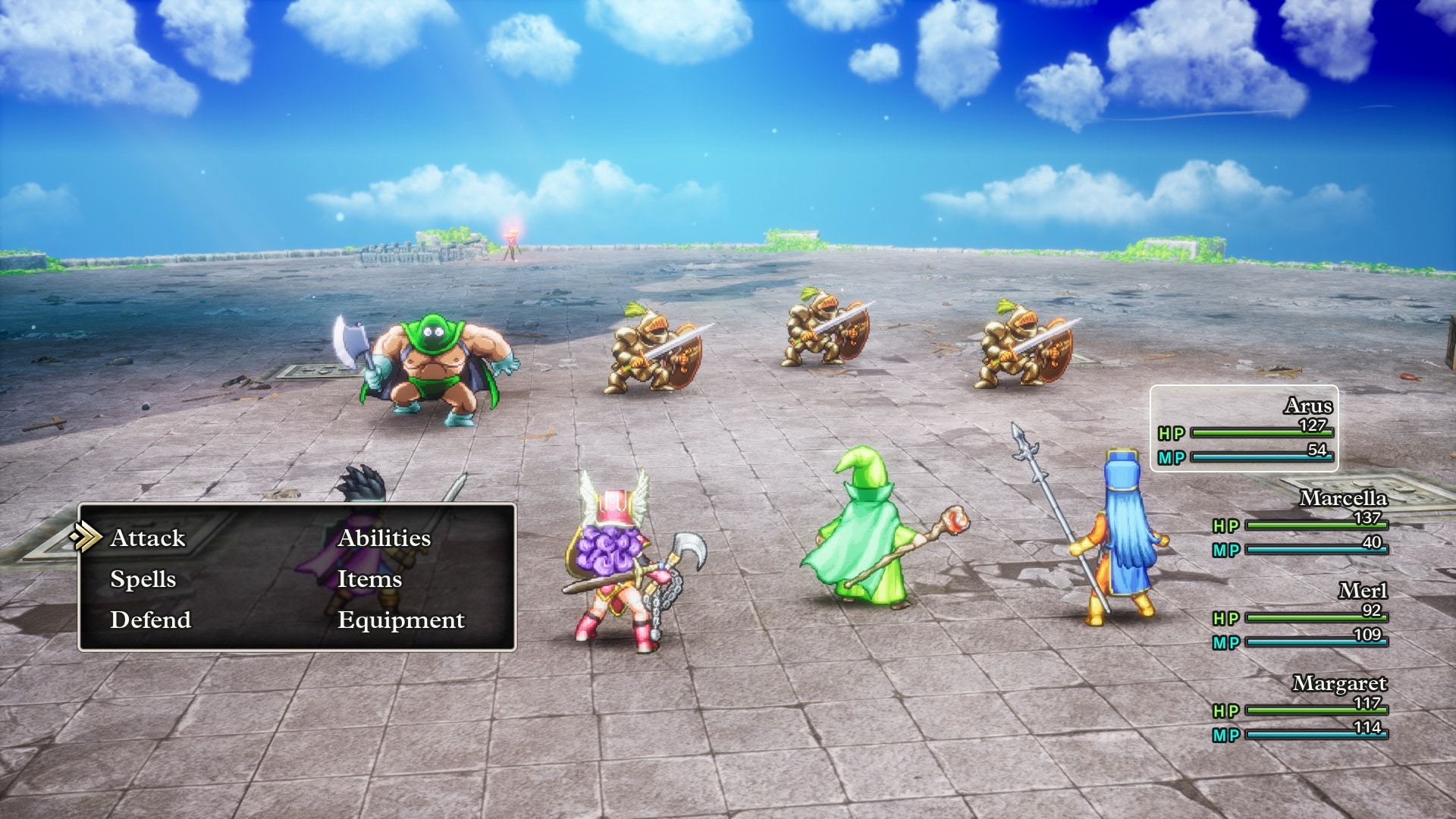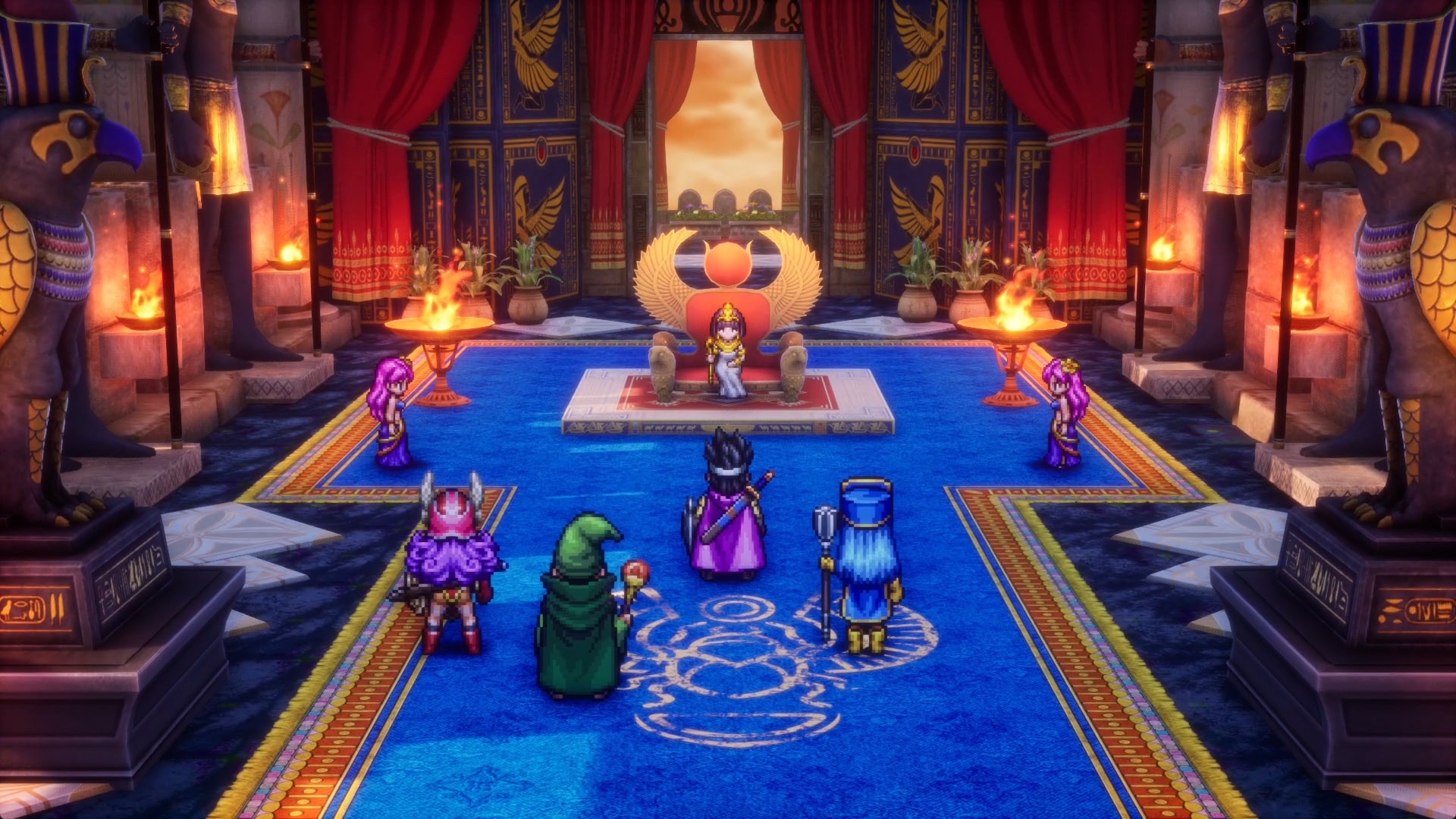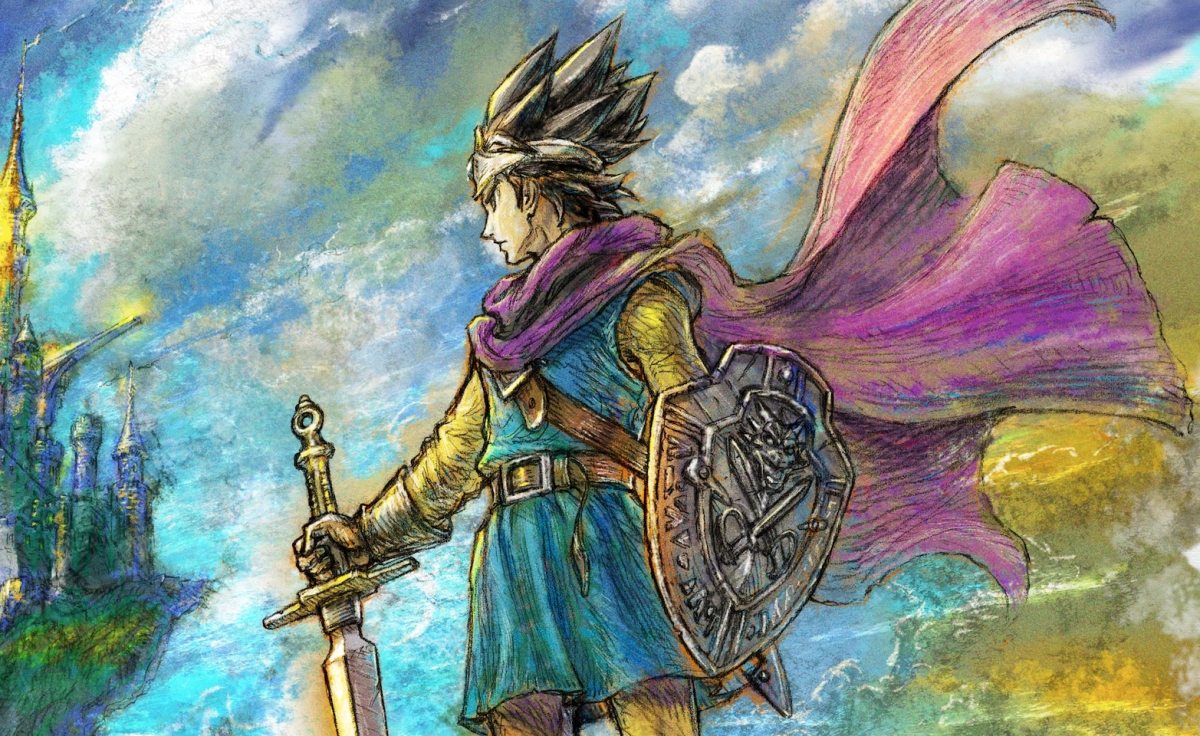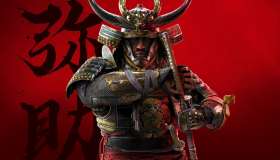In the land of Aliahan, evil is growing. As a young hero of this land, your life should be carefree – but you carry the legacy of heroes, and so it falls to you to defeat the rising dark lord Baramos, who threatens the peace and safety of your kin. All of sixteen years old, and the weight of the world is on your shoulders. And so, the classic tale of Dragon Quest 3 HD-2D Remake begins.
With a wonderful pixel art style that stays true to the game’s roots while packing in new details and glamour, this remake is so far shaping up to be an excellent revival of one of the most influential RPGs of its era.
Over the course of multiple stages, GamesHub was able to get hands-on with the game’s exploration, combat, and narrative, kicking off a quest to defeat the vagabond Robbin’ ‘ood in Skyfell Tower. What was most apparent while diving in was the excellence of choosing an Octopath Traveler art style to re-tell the tale of Dragon Quest 3.
In remaking such an iconic game, the justification for change should be strong. While Dragon Quest 3 is fairly old by modern standards, its art style remains iconic and memorable – and it’s maintained its core spirit across multiple remakes and ports, including for mobile. There’s a compelling nostalgia tied to the game, and to the limitations of its pixel art.
Square Enix appears to understand this well, because rather than remake the game entirely, it has simply evolved its core principles, translating its classic art style into a multi-plain 2D-3D world. The wider world of Aliahan and its surrounds are depicted with lush 3D textures, allowing in new details and wonder. Kingdoms are regal, rivers run wild.
Read: Life is Strange: Double Exposure preview – Multiverse of Maxness

Each of the game’s main character models, meanwhile, are rendered in a 2D pixel art style that allows them to maintain a brilliant, bright sense of personality. Of course you’d want to retain this core art when it’s created by the late, great Akira Toriyama.
Toriyama’s influence is everywhere in Dragon Quest 3
Toriyama’s work remains so beloved globally due to its ageless style. His characters are lively and expressive, and incredibly fun. They’re immediately recognisable for their bright colours, wide eyes, spiky hair, and cheery faces. In translating this artwork into a new format, Square Enix has corralled the best of both worlds – pairing the style and flair of classic Dragon Quest, with modern sensibilities.
In combat, the joy of this mixture is amplified tenfold – as you face off against lovely, bouncy sprites with shimmering armour, slimy bodies, and – in the case of Robbin’ ‘ood – goofy, jiggly chests. For those familiar with the Dragon Quest style of monsters, it’s a real delight to see them rendered in this form – particularly the slime variants and the Vladdies, which always look oh so silly and loveable.
At every turn, there’s something new to marvel at in Dragon Quest 3 HD-2D Remake. The colours of throne rooms. The lushness of trees. The way shadows and light played off character models, to ensure that 2D sprites still fit into a rich 3D world.
The game is like a moving tapestry in parts, with Toriyama’s influence shining through in every facet.

Square Enix has been incredibly clever in its choices here, ensuring the spirit and personality of Dragon Quest 3 is maintained, while this remake’s nature gives scope for an impactful refresh. With its devotion to maintaining the original game’s style, this title is a lot like a remaster in design – but one that builds on what came before, for an adventure that enhances the original story, existing as a modern companion piece.
After over an hour with the game, we’ve got a taste for more – and given what we’ve seen, Dragon Quest 3 2D-HD Remake will more than likely deliver on its promises.
Dragon Quest 3 2D-HD Remake is set to launch on 14 November 2024.





